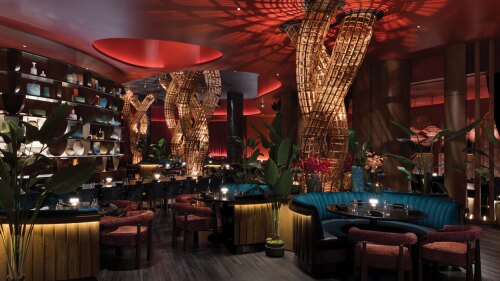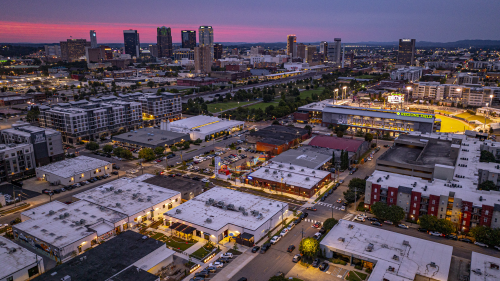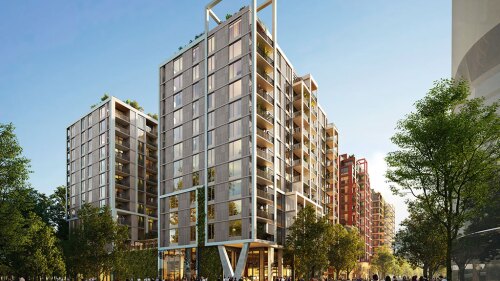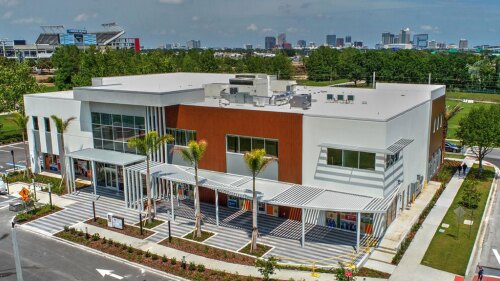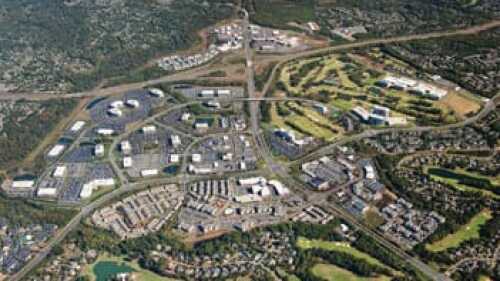Property Types
Hotels and Resorts
The hotel industry in the United States faces complex challenges in 2025, according to Jan Freitag, national director of hospitality analytics for the CoStar Group. During the “State of the U.S. Hotel Industry” presentation at the ULI 2025 Spring Meeting in Denver, Colorado, Freitag highlighted the challenges facing the hotel business amid macroeconomic uncertainty.
Once a sprawling expanse of uncharted land, Las Vegas, Nevada, has evolved into the entertainment capital of the world, a gaming super-hub, and a premier destination for sports. This remarkable transformation didn’t happen overnight; it stemmed from decades of strategic planning, investment, and visionary zoning recommendations.
Las Vegas is unlike any other place in America. Each year it draws more than 40 million visitors to the dazzling casinos and hotels that “turn night into daytime”—and transform the city into a glittering jewel in the desert. With 164,000 hotel rooms, Las Vegas is the largest hospitality market in the U.S.—outpacing Orlando, Florida, the next biggest market, by approximately 15 percent, according to JLL.
Industrial
Standing in the shadow of Regions Field and within earshot of Railroad Park, Birmingham’s Urban Supply hints at what the next chapter of downtown life could look like. Once-quiet brick warehouses are being steadily reimagined into patios, storefronts, and gathering spaces along a new pedestrian alley. Early tenants have begun to open their doors, and programming is slowly bringing people into the district. While the project is still in its early stages, the framework is in place for a vibrant hub that will grow block by block in the years ahead.
What trends are shaping the future of the industrial sector? Four experts from ULI’s Industrial and Office Park Development Council talk about the industrial submarkets and property types that offer the greatest opportunities, challenges developers face in bringing new projects to market, ways artificial intelligence and emerging technologies are reshaping the sector, tenant priorities, and other key trends.
After a quiet first half of 2024, CMBS originations increased 59 percent in Q3 on a year-over-year basis, according to the Mortgage Bankers Association’s Quarterly Survey.
Mixed-Use
South Los Angeles, known for urban blight, high unemployment, and poverty, has a new bird’s-eye view of affordable housing. Adams and Central, a mixed-use project, has been built by developer Meta Housing Corporation at the intersection of East Adams Boulevard and Central Avenue, a major traffic hub in a former ghost town of run-down buildings, incompatible land uses, and underused lots.
Two years ago, a new mixed-use project at 14th and W streets, N.W., in Washington, D.C., was on the verge of development—until the credit markets collapsed. Today, 14W, which comprises 178 apartments, 170 below-grade parking spaces, and a 44,000-square-foot YMCA facility, is rising once again. Find out how a new joint venture and a multiyear delay actually helped 14W spring back to life.
As chronic weakness continues in U.S. greenfield development markets, inner-city regeneration remains a relative bright spot—and indications are that it is getting brighter. Adaptive use projects are getting particular attention, thanks in part to increasing government incentives. Read what industry changes are thought capable of altering the development environment permanently.
Multifamily
Making a significant move in the multifamily investment space, industry veteran Matt Ferrari officially launched PXV Multifamily, a private investment firm poised to acquire up to $2 billion in assets over the next 36 months. With a focus on both middle-market value-add properties and institutional-quality opportunities across the United States, PXV stands ready to capitalize on emerging market trends and challenges. Ferrari is an active member of the Urban Land Institute and the Multifamily Blue Flight Product Council.
In 2013, when the founders of Redbrick LMD looked over a large swath of land in Southeast Washington, D.C., they immediately connected with the breathtaking views of the U.S. Capitol, the Washington Monument, the Anacostia River, and expansive green space. They recognized that this kind of access was rare anywhere in the region, but especially in this often-overlooked corner of the city.
The evolution of community efforts to improve access to housing reveals that successful projects often hinge on fostering strong local partnerships that can provide essential supports and services.
Office
Members of the Young Leaders Group of ULI Orange County/Inland Empire put their skills to work helping those who help the disabled. They offered advice to Guide Dogs of the Desert, a Riverside County, California, nonprofit that pairs service dogs with people who are blind, with a plan for expanding its live-in training campus.
Federal agencies are under continuing pressure to reduce their demand for leased and build-to-suit space. They intend to reduce square footage used per employee, increase teleworking—and make better use of existing government buildings, administrators told a ULI WashingtonTrends conference audience.
How did Charlotte, North Carolina, developer Bissell Companies build a major mixed-use development —largely on spec—despite dramatic changes in economic conditions? Their Ballantyne community includes more than 5 million square feet (465,000 sq m) of office space, 500,000 square feet (46,500 sq m) of retail, 1,000 hotel rooms, and 4,600 residential units. And the developers believe that it pays to have inventory at the ready.
Residental
A few developers, such as New York City–based Jonathan Rose Companies (JRCo) and St. Louis–based McCormack Baron Salazar, start with a mission-driven approach to create vibrant communities that give more people a safe and engaging place to call home—and then make sure that the developments also fit with their profit motivation.
A development in Boston is the first of the five initial Choice Neighborhoods projects to be completed when HUD Secretary Julián Castro cut the ribbon on Quincy Heights, a 129-unit scattered-site housing redevelopment in Dorchester’s Quincy Corridor.
At a panel discussion on mixed-income housing at the recent ULI Housing Opportunity 2015 conference, ULI trustee Colleen Carey shared a recent experience of trying to raise capital for a mixed-income multifamily project that her firm, the Cornerstone Group, hopes to build as part of Lyndale Gardens, a new town center in Richfield, Minnesota.
Retail
For decades, civic leaders have tried to revitalize Market Street, San Francisco’s central thoroughfare, only to see their efforts founder. “I sometimes call it the great white whale of San Francisco,” says Eric Tao, managing partner at L37 Development in San Francisco and co-chair of ULI San Francisco. “Every new mayor, every new planning director, every new economic development director has chased that white whale.” This year, however, an international competition of ideas hosted and run by ULI San Francisco, with support from the ULI Foundation, generated fresh momentum for reimagining the boulevard. The competition drew 173 submissions from nine countries and sparked new conversations about the future of downtown San Francisco.
The OAK project began in 2009, when a development firm set their sights on the corner of Northwest Expressway and North Pennsylvania Avenue, the state’s most important and busiest retail intersection. As the region’s only parcel capable of supporting a vertically integrated project of this scale and density, that land represented an opportunity to create something truly special.
As aging retail continue to evolve, one increasingly popular trend has been to redesign malls as town centers—recalling a time when such commercial districts were the heart and soul of a community. Mall–to–town center retrofits are emerging throughout the nation, especially in suburban communities, where pedestrian-friendly, mixed-use environments are highly attractive to millennials now raising families.



